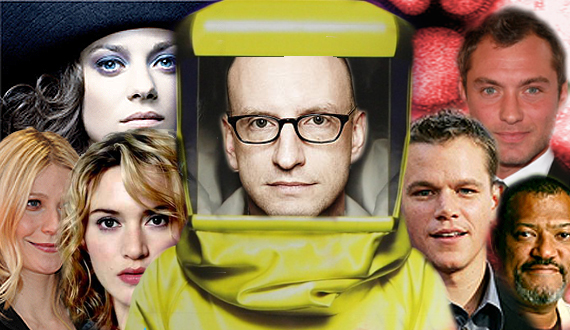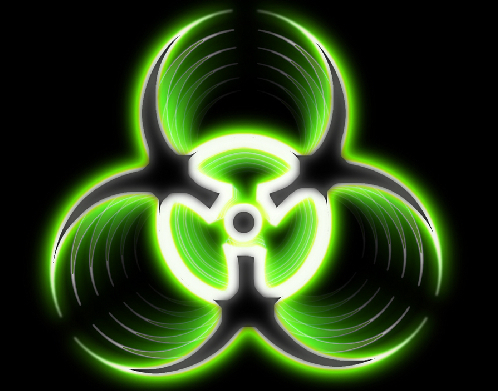
You Can’t Wash It Off – Contagion
Remember the line that you would come out of an over-decorated Broadway show singing the chandelier? When you leave Contagion, you’ll head right for the hand sanitizer.
Steven Soderbergh’s disaster movie may scare you, although it is anything but the Towering Inferno, its predecessor that loaded on star turns, sanctimony, and obvious stage-set crescendos. In Contagion, a lethal disease travels discreetly, and people cough, weaken and die. It’s frightening anti-climactic. Think of Beckett rather than Shakespeare. And then think of the sound of silent microbes invading continent after continent. Like the Towering Inferno, Contagion has the kind of huge dream team cast that disaster sagas helped to legitimize, so Soderbergh can kill off stars and still have troops to spare. Think of a team with a great bench.
Without bravura moments, Contagion’s detail is still numbingly accurate. Gwyneth Paltrow plays an exec who arrives home with the proverbial flu-like symptoms – after breaking in Chicago for a tryst with an old beau. She dies after a gruseome seizure. The last shot of her that we see shows her scalp being peeled off in an autopsy, with doctors grimacing at what they see underneath. Nobody said this was a date movie.
Implausible? I am writing this as I sit at the Toronto International Film Festival. Toronto was where SARS hit hard in North America — brought there from China, as is the virus that Paltrow carries in the film. Even with only a few cases in Toronto, SARS paralyzed tourism in the city. In China, where people feared being infected while on public transportation, car sales surged.
As you might have guessed, the story avoids the kind of melodrama that might otherwise risk making a disaster film a punch-line ten years from now. . But this isn’t a research paper. Its poignancy and believability ensure that you can’t file Contagion away, as we tend to do with every report predicting cataclysm. The emotional truth of its drama ensures that the frightened audience may be left with something to think about. This isn’t science fiction.
Nor is Contagion melodrama. Just think of Outbreak, in which Dustin Hoffman plays a military scientist who learns that the government is sitting on a serum to treat a plague that’s taken millions of lives and torn society apart. What the military really wants t do is weaponize the deadly virus. The film is a conspiratorial saga – all the more plausible with WMD wars raging after all these years – but it became a punchline with lingering images of Hoffman in a HazMat suit, looking like a helmeted Michael Dukakis in an army tank – an image that helped Dukakis lose the 1988 presidential election. Outbreak also provided an afterlife for an infected monkey as a spoof in episodes of “Friends” – starring the monkey from Outbreak. (The Friends allusions, dark and nasty, were rare for that awful show – proof that even a broken clock can be right twice a day.
Not allergic to the zeitgeist, Soderbergh and screenwriter Scott Z. Burns give us the parallel horror stories of viral disease and viral information – each of which works to infect, weaken and tear apart society, with Jude Law as a blogger with what might be a grain of truth in a clutch of accusations. There’s a kind of zombie element here, taking us back to the Invasion of the Body Snatchers – where when there’s a choice of helping others and saving those close to you, characters slam the door.
If that prospect isn’t discouraging enough, Burns is now at work on a script, which he’ll direct, about Big Pharma.
Soderbergh won’t be available. With four films ahead of him, Soderbergh talks of becoming a painter. We’re told that he has a studio in New York. Given that movies are a committee-driven medium much of the time, perhaps he wants to do something for and by himself. He surely knows that art critics can be as nasty as film critics. In his public statements at Venice, Soderbergh also seemed to recognize that he jumped the gun with news about his turn to painting – and may have driven up expectations in a risky way.
My guess is that he won’t abandon movies – he still seems to be booked for another five or six years. Yet if his legacy needs consideration now, Soderbergh will be seen, among other things, as a director who showed that he could make movies in the studio system which he and his cast and crew didn’t need to be ashamed of. He could also go far down-budget with projects like Bubble and The Girlfriend Experience for next to nothing, proving that the independent film experience – which he pioneered – wasn’t dead yet, and that films made for nothing could be luminous.
As far back as sex, lies and videotape (1989), Soderbergh showed his gift as a director of actors. Like other directors for the studios – -Hitchcock especially – he’s gotten unexpected performances out of unlikely people. Remember Julia Roberts in Erin Brockovitch? You’ll see this in Gwyneth Paltrow’s death as an early casualty of the Contagion plague – seizures leading to death and an unsettling autopsy, even for the rare teenagers who’ll be watching Contagion – and that’s one actor at the beginning of the film. Actors have to believe in what they’re doing to give that kind of performance. Even if Soderbegh does abandon filmmaking, the actors who want to work with him might bring him back.
